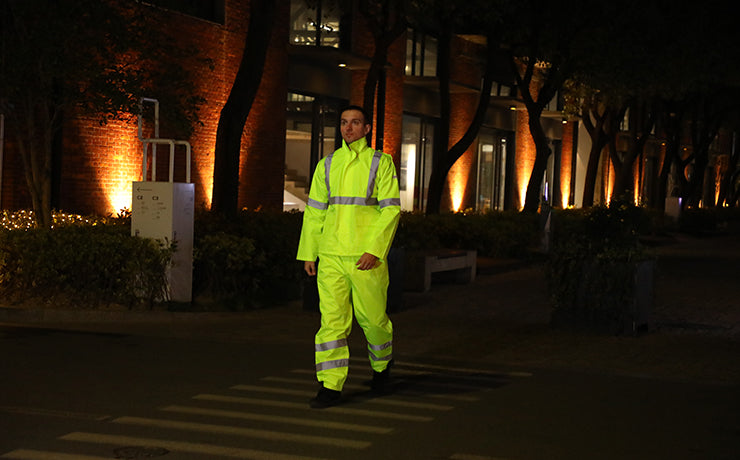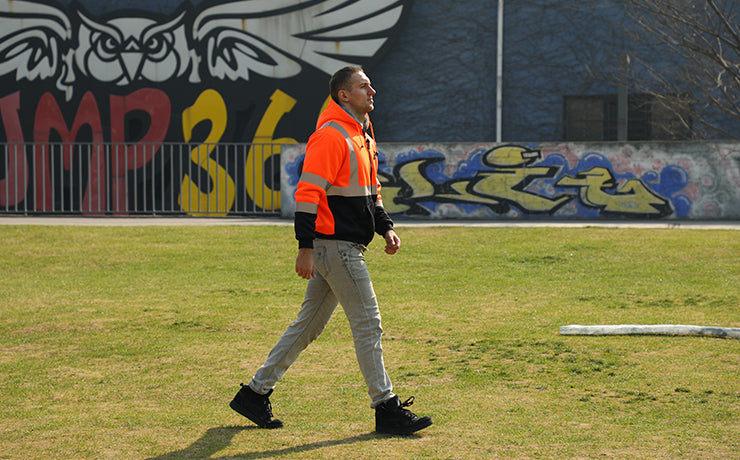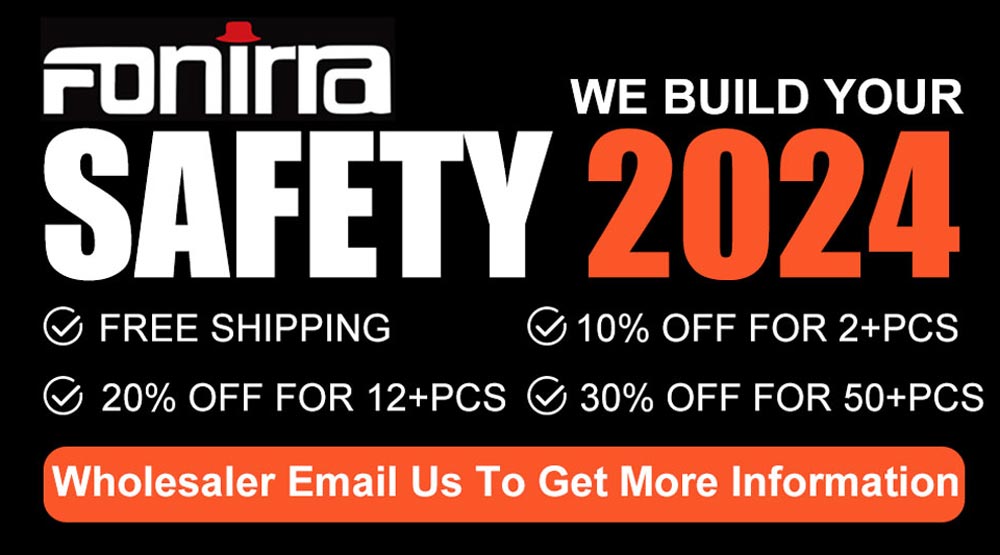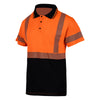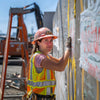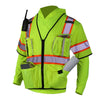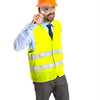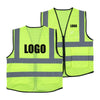5 Reasons Cheap Safety Vests Will Make You Overspend Elsewhere
Safety vests are an essential investment for businesses in many industries, providing visibility and protection for your workers. However, in an effort to cut costs, some companies opt for cheaper safety vests, assuming that they will get the job done just as well as more expensive options. In this blog post, we'll explain why choosing cheaper safety vests can actually end up costing you more in the long run. We'll cover five key reasons why spending a little more upfront on quality safety vests is a smart investment that can help you avoid overspending elsewhere.

Lower Quality and Durability
When you opt for cheap safety vests, you're likely sacrificing quality and durability. Cheaper options often use inferior materials that wear out quickly or don't stand up to the rigors of a job site. Additionally, they may lack features such as reinforced seams or tear-proof construction that are designed to increase longevity. As a result, you may find yourself replacing your safety vests more frequently than necessary, which can add up over time.
This increased replacement frequency can lead to higher time costs associated with crews swapping out the old vests for new ones. Furthermore, because these cheaper vests don't last as long, you may find yourself needing to purchase more of them over time—which will inevitably add up and drive up your overall costs.
Lack of Features
Cheaper safety vests often have fewer features than their more expensive counterparts. These can include a lack of:
- functional pockets for carrying tools and cellphones,
- ID holder (usually a see-through chest pocket)
- fleece lining for cold weather, and
- adjustable straps that ensure a secure and comfortable fit.

Without such features, crew members may be less likely to wear their safety vests—which means they won't be as visible or protected on the job site. On top of this, purchasing an additional set of tool belts and other apparel functioning as pockets can add to the cost down the line. Moreover, cheaper safety vests may not meet certain industry standards for visibility and protection. This could mean that you're wasting your money on safety vests that are ineffective at providing adequate coverage for your crew, leading to a potentially hazardous work environment. Investing in quality safety vests with all the necessary features upfront can help you avoid costly problems later on.
Inaccurate Sizing
Cheaper safety vests often lack accurate sizing information, which can lead to a poor fit for the person wearing it. When purchasing quality safety vests, companies should be aware of what size is appropriate for their employees. Unfortunately, many safety vests from Asia are not labeled with proper measurements or use standard sizing that may not be tailored to the individual workers’ body types. Without these details, it can be difficult or impossible to determine which size will work best for each employee, leading to a vest that fits poorly.

A poor-fitting vest can cause discomfort on the job—which can lead to workers being less productive and potentially even injuring themselves due to improper movement or strain caused by an ill-fitting vest. Additionally, a vest that doesn't fit properly will not provide adequate protection or visibility as intended. For example, if the material hangs too loosely around the armholes and neckline, it may block the reflective strips meant for visibility at night. Investing in quality safety vests with more detailed sizing information upfront avoids this issue and ensures that workers are always properly protected and visible on the job site.
The cost of overspending on poorly fitted safety vests can add up quickly. For example, if workers need to be retaken for accurate size information, the cost of travel and time off the job can add up quickly. Additionally, if a safety vest doesn’t fit correctly due to inaccurate sizing information, it may not provide adequate protection or visibility as intended. This could result in costly on-the-job injuries that require medical attention, as well as potential legal ramifications if workers are injured while wearing inadequate safety equipment.
Poor Visibility
Cheaper safety vests often use reflective materials that are not designed to last, meaning they may fade away quickly and become less effective over time. While these vests can provide some level of visibility initially, their effectiveness is diminished with frequent use or exposure to the elements. Additionally, some cheaper vests use low-grade materials for the reflective strips that can easily tear off or fail due to wear-and-tear. This lack of durability means workers may need to replace their vest more frequently, which adds up in time and expense.
Furthermore, the reflective material used on these non-ansi safety vests may not meet certain industry standards for visibility and protection. This could mean that workers are left exposed while wearing inadequate safety equipment during nighttime work hours, potentially leading to hazardous situations like collisions with vehicles or other machinery. It’s important to invest in quality safety vests with high visibility ratings upfront in order avoid such costly issues down the line.

To ensure a safe working environment, companies should look into purchasing hi vis clothing made from fluorescent materials that offer 360° enhanced visibility and are designed to last longer than traditional reflective material. Such hi vis clothing is usually constructed out of sturdy fabrics like polyester ripstop—which is resistant to tearing—or PVC fabric—which provides better insulation against cold weather conditions. Additionally, purchasing construction clothes made from breathable fabrics helps keep workers comfortable on the job site by allowing air flow and moisture transport from within the vest.
Additional Costs for Compliance
Cheap safety vests often do not comply with the American National Standards Institute (ANSI) and International Safety Equipment Association's (ISEA) 107 Class 2 and 3 standards, which are widely recognized as being among the industry's most effective safety guidelines. These standards set specific requirements for the minimum amount of reflective material needed to be visible in both low and high light conditions; for example, Class 3 vest must have a minimum of 310 inches squared of retroreflective material, along with XX reflective stripes. Without proper adherence to these standards, workers may not be adequately protected or visible when working during nighttime hours or other hazardous conditions.

Moreover, any non-compliance with ANSI standards can lead to steep fines for companies due to their failure to provide adequate protection for their employees. Companies that choose to go with cheaper vests that don't meet these standards (Which require ANSI Class 2 or 3 in most cases) also risk potential lawsuits from injured workers, who may rely on this type of inadequate protection in dangerous situations where visibility is imperative.
OSHA inspectors ensure that companies are compliant with the current health and safety regulations, and they may issue hefty fines for employers who don't adhere to their strict guidelines.
Conclusion
In conclusion, it is essential to invest in quality high visibility safety vests and other hi vis clothing that are compliant with ANSI/ISEA-107 Class 2 and 3 standards, and have high quality materials and features. Not only can cheaper alternatives be ineffective for providing visibility and protection on the job site, but employers who fail to meet these industry regulations may face hefty fines or costly lawsuits from workers injured while wearing inadequate equipment.
By investing in clothes made of durable materials like polyester ripstop or PVC fabric—which offer 360° reflectivity during nighttime work hours—companies can ensure their employees have adequate protection at all times without having to constantly replace fading reflective material. Investing upfront in high quality safety gear will not only save you time, money, and stress down the line but also help protect your most valuable asset: your workforce.
Get our free ebook!
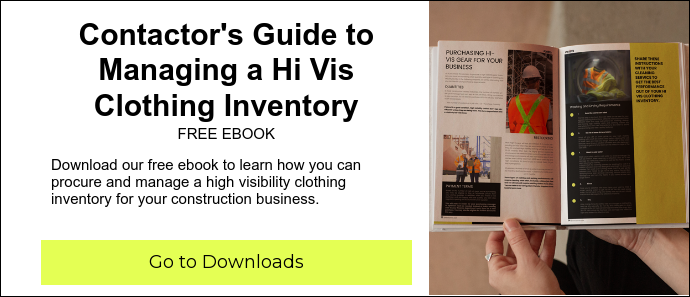 In this ebook, we discuss the importance of choosing the right high vis clothes, calculating your costs based on materials and industry standards, maintaining an inventory, and more. Get yours today!
In this ebook, we discuss the importance of choosing the right high vis clothes, calculating your costs based on materials and industry standards, maintaining an inventory, and more. Get yours today!
-
Posted in
product guide

